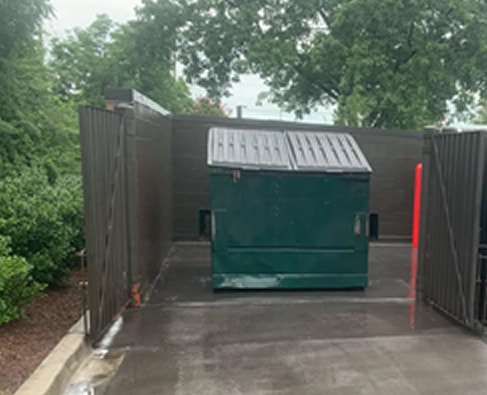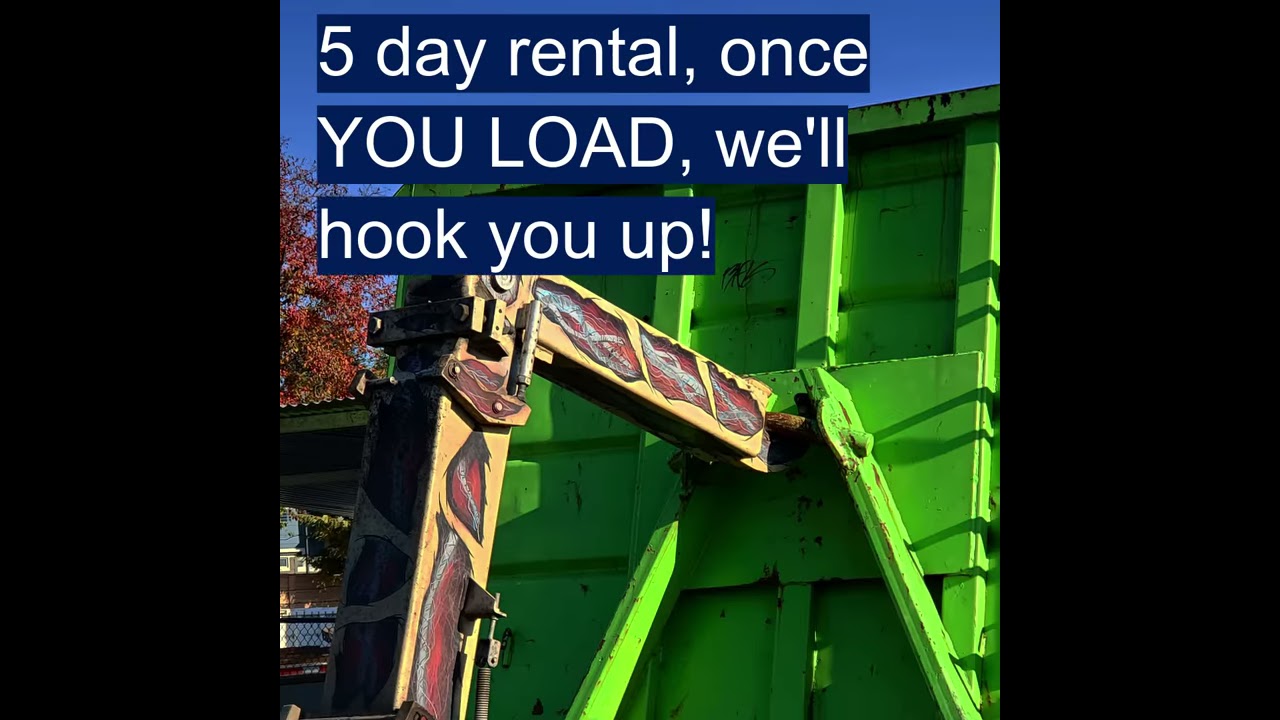When it concerns dumpster rental, making informed decisions regarding dumpster size, rental duration, permits, and safety precautions is important to guarantee reliable waste removal, stay clear of pricey blunders, and adhere to local regulations You require to reflect on the ideal dumpster size based upon your task's range, understand how rental expenses are influenced by size, duration, and location, and acquire essential authorizations to prevent penalties. Appropriate positioning, placing, and product constraints are likewise important, and safety and security preventative measures have to be required to avoid crashes and ecological threats. By recognizing these essential variables, you'll be well-equipped to browse the dumpster rental process with confidence.
Choosing the Right Dumpster Size
When dealing with a large-scale project, eliminating waste efficiently is critical, and selecting the right dumpster size is crucial to attaining this goal. A dumpster that is as well small will certainly cause frequent emptying and added expenses, while one that is also large will certainly cause unnecessary rental fees.
To select the ideal dimension, consider the range of your project and the sort of waste you'll be generating. For small projects, such as bathroom remodels or small remodellings, a 10-15 lawn dumpster may be adequate. Medium-sized projects, like kitchen area remodels or small building and construction jobs, may call for a 20-30 lawn dumpster. Massive tasks, such as commercial construction or major remodellings, will likely require a 40 lawn dumpster or larger.
Additionally, take into consideration the weight and density of the waste, in addition to any local regulations or constraints on dumpster size and placement. By carefully taking into consideration these factors, you can guarantee you have the right dumpster dimension for your project, conserving you money and time https://pastelink.net/v7gzrlsk in the long run.
Understanding Dumpster Rental Costs
What makes a dumpster rental cost-effective? The expense of renting out a dumpster greatly depends on several variables, including the size of the dumpster, rental duration, and location Understanding these variables can help you make an informed choice and conserve money.

Typically, smaller dumpsters are a lot more economical, yet they may not be suitable for large projects. On the various other hand, larger dumpsters may be much more expensive, but they can manage bulkier waste.
Rental period additionally plays a substantial role in figuring out the general expense. The longer you rent the dumpster, the more you'll pay. However, some rental companies supply price cuts for prolonged rental periods.
Additionally, location can affect the cost, as dumpsters might require to travel longer distances to reach your website, leading to higher transport costs.
To obtain the very best worth, consider your project's specific requirements and select a dumpster that fits your requirements. Make sure to ask about any kind of additional fees, such as shipment or pick-up costs, and negotiate the price if possible.
Obtaining Needed Licenses and Licenses
A vital element of dumpster rental is confirming you have the necessary permits and licenses to position the dumpster on your residential property or job site.
Failure to obtain these licenses can cause fines, penalties, and even dumpster removal. It's essential to study and recognize the specific policies in your area, as they differ by city, county, and state.
Typically, you'll require an authorization to position a dumpster on public property, such as a street or walkway. Nevertheless, some areas might call for authorizations for dumpsters on private property as well.
Be certain to get in touch with your local government or house owners organization (if suitable) to determine the needed permits and licenses. Your dumpster rental business might also supply guidance or assistance in acquiring the needed permits.
Selecting the very best Rental Duration
Determining the ideal rental duration is crucial to ensuring a seamless dumpster rental experience, as it straight impacts project timelines, budget, and total convenience.
A rental period that is too short may bring about rushed projects, while a period that is too long can lead to unnecessary costs To pick the best rental duration, consider the range and complexity of your task, as well as the amount of debris you expect to generate.
Typically, rental durations range from a few days to several weeks or perhaps months. For tiny jobs, such as backyard clean-ups or small restorations, a temporary leasing of 3-5 days may suffice.
For bigger tasks, like building and construction or demolition, longer rental periods of 1-2 weeks or even more might be essential. Be sure to discuss your project requirements with your dumpster rental service provider to determine one of the most ideal rental period for your specific needs.
Prohibited and Accepted Materials
Compliance with product constraints is vital to ensure an easy dumpster rental experience, as it straight impacts the security of individuals, the environment, and the performance of waste disposal.
Familiarizing on your own with prohibited and approved materials assurances you're not only adhering to policies but likewise preventing possible fines and penalties. Usually, accepted products include household trash, building particles, and backyard waste.
However, specific products are strictly forbidden due to environmental and security concerns These normally include hazardous waste like batteries, electronics, and chemicals, along with fluids, combustible products, and biomedical waste.
Additionally, some products may call for special handling and disposal, such as refrigerators, air conditioning unit, and tires. Be sure to talk to your dumpster rental company to establish their specific standards and restrictions
Placing and Positioning the Dumpster
Proper positioning and positioning of the dumpster on your residential property is vital to ensure a seamless and effective waste management procedure. This ensures easy access for filling and discharging, reducing the danger of damage to your building or the dumpster itself.
When choosing the suitable area, think about the closeness to the area where the waste will certainly be produced, along with the route the dumpster truck will certainly take when providing and collecting the container.
Choose a flat, degree surface that can support the weight of the dumpster when it's complete. Avoid putting the dumpster on soft or uneven ground, as it might sink or tip over.
Additionally, see to it the dumpster is placed in a manner that enables simple accessibility, such as near a door or entrance, and is not obstructing pedestrian or automobile traffic
Safety Preventative measures and Regulations
When leasing a dumpster, regularly examining and sticking to safety precautions and regulations is essential to preventing mishaps, penalties, and environmental hazards.

This consists of seeing to it the dumpster is put on a level surface, away from high-voltage line and various other obstructions, which it is safely secured to the ground to stop tipping or rolling.
Additionally, it is essential to follow weight and size restrictions, as overloading or poorly packing the dumpster can result in crashes and fines.
Moreover, it is necessary to adhere to local regulations relating to the types of products that can be disposed of in the dumpster, such as hazardous waste or recyclables.
Failure to abide by these regulations can lead to penalties, fines, and environmental damage.
